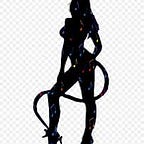About 20 percent of adults have varicose veins, and most everyone has a spider vein or two. While you may not like the way they look, these bluish, lumpy intrusions are usually harmless. However, for some people, they can be painful and dangerous.
All veins have valves to help promote blood return from the heart from the legs. The veins are like an upside down tree with lots of branches in the lower leg and more and more larger vein branches as the veins get to the pelvis. Once the veins cross into the pelvis there are two main vein branches know as the iliac veins. Below most the veins have valves so that when the patient walks and moves the muscles squeeze and push the blood up. The valves keep the blood from coming back down. There are two main systems in the leg. One is the deep and the other is the superficial. Most of the blood comes up the deep veins. Varicose veins are primarily from valve dysfunction in the superficial veins. The primary superficial veins that impact the development of varicose veins are the saphenous veins and its branches. Such when people have varicose veins most of the time its from failure of the valves of the saphenous veins (which are just below the skin).
Ultimately the main cause of impaired valve function in the spahenous veins is usually genetic. This is called primary venous insufficiency. Or in some cases it can be damage from prior clots (like DVT or phlebitis after injuries or trauma). This is called secondary venous insufficiency. Ultimately the cause does not matter much as people do not have much control over either by the time the varicose veins develop.
If you are experiencing any of these symptoms, make sure you give your doctor a call and schedule a vein screening. Some vein clinics like the Vein Centre offer online consultations as well. The earlier you can catch a circulatory problem, the better chance you have at correcting it or controlling it.
What are the common symptoms and early warning signs for varicose veins and spider veins?
- Severe and continuous leg pain
- Swelling in the legs, ankles, and feet
- Heaviness or a dull ache in the legs that happens often
- Varicose veins are red and painful or feel warm
- Spontaneous bleeding from veins or bleeding from a slight injury
- Itchy and inflamed skin around veins
- Ulcer and open skin wounds that developed on their own
While varicose veins may never become a health concern, they have the potential to develop into a vein ailment or disease over many years. These more complex health issues can take years to form, so if you have varicose veins, you should schedule consistent screenings.
